Venice has long captured the imagination of travelers, inspiring visions of intrique and perhaps romance. A lattice-work of 400 bridges connecting 118 small islands in a shallow lagoon between the Po and the Piave rivers. Italian, but still holding on to its independent history and dialect with a mesh of Byzantine and Italian Gothic architecture, Venice is one-of-a-kind.
A visit to Venice is on many bucket lists, and shouldn’t be missed when planning a trip to Italy. While it is possible to “do” Venice in less than two days, I would recommend spending 3 days in Venice. And if you are wondering how to spend three days in Venice, read on for my full 3 days in Venice itinerary.
My husband and I first visited Venice 20 years ago and to be honest, we didn’t love it. All of my fanciful imaginings of romantic Venice were overshadowed by the reality of throngs of cruise ship passengers, relentless street hawkers, and overpriced food. I swore that if I ever gave Venice a second chance, it would need to be in the off season. And that’s exactly what we did.
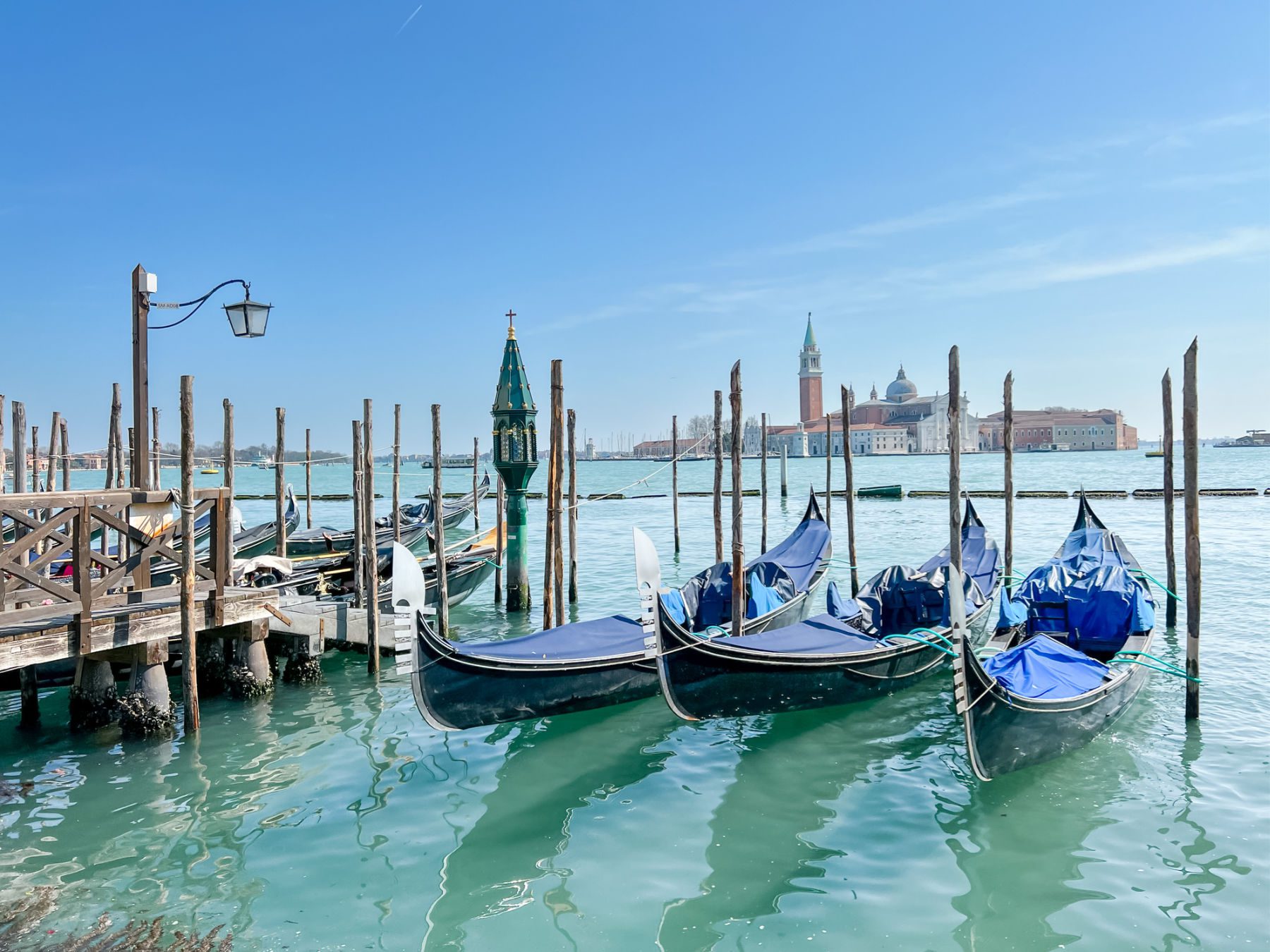
For my daughter’s spring break and high school graduation trip, we planned an epic European adventure. We spent a lovely six nights in Paris, followed by three nights in Venice, to be capped off with five nights in Florence.
Since I spent so much time researching and planning our trip to Venice, I wanted to share our 3 days in Venice itinerary. You can also check this post for things to do in Venice.
3 Days in Venice Itinerary
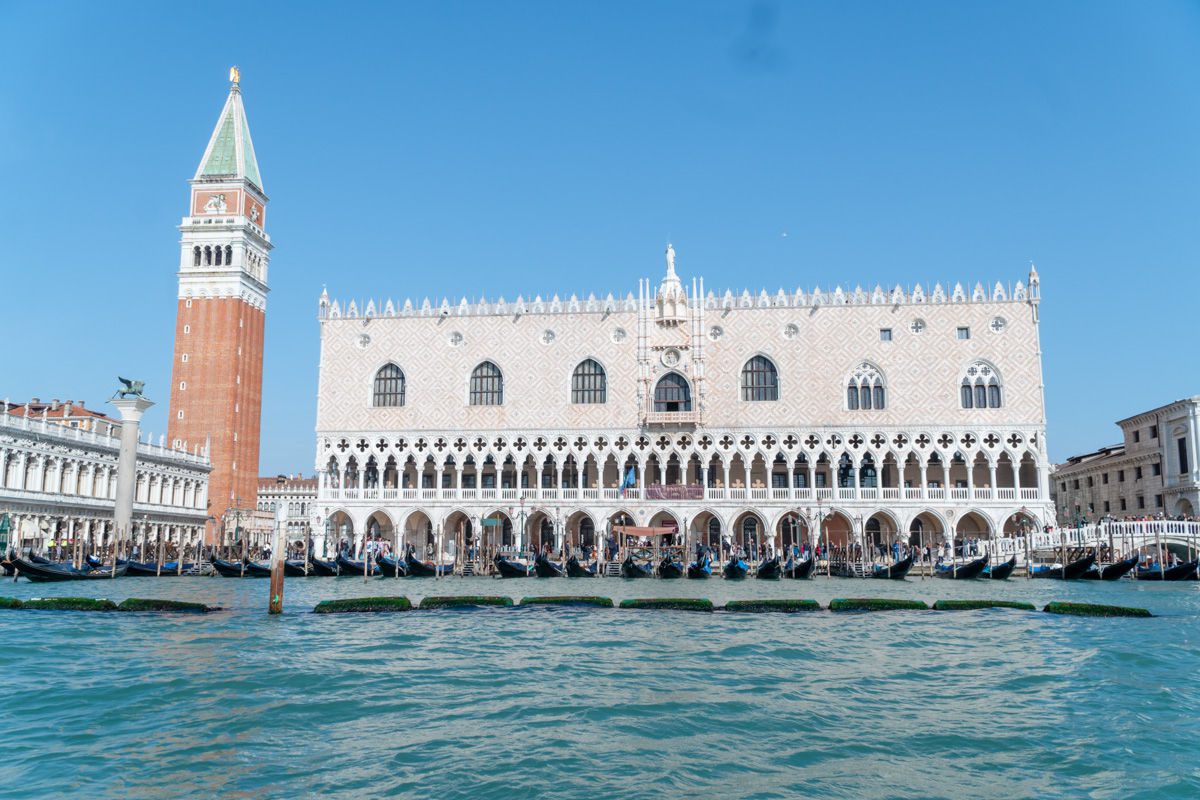
Note: This post may contain affiliate links. If you click a link and make a purchase, I may receive a small commission. All opinions are my own.
Following I’ve outlined our 3 days in Venice itinerary, with a few modifications and suggestions.
Day One – Afternoon (St. Mark’s to Rialto)
Chances are that unless you are flying directly from the USA into Venice on an overnight flight, you are going to arrive in Venice in the late morning or early afternoon. Take some time to get settled into your accommodations and have lunch at one of the restaurants recommended above to fuel up to start your exploration of Venice.
St. Mark’s
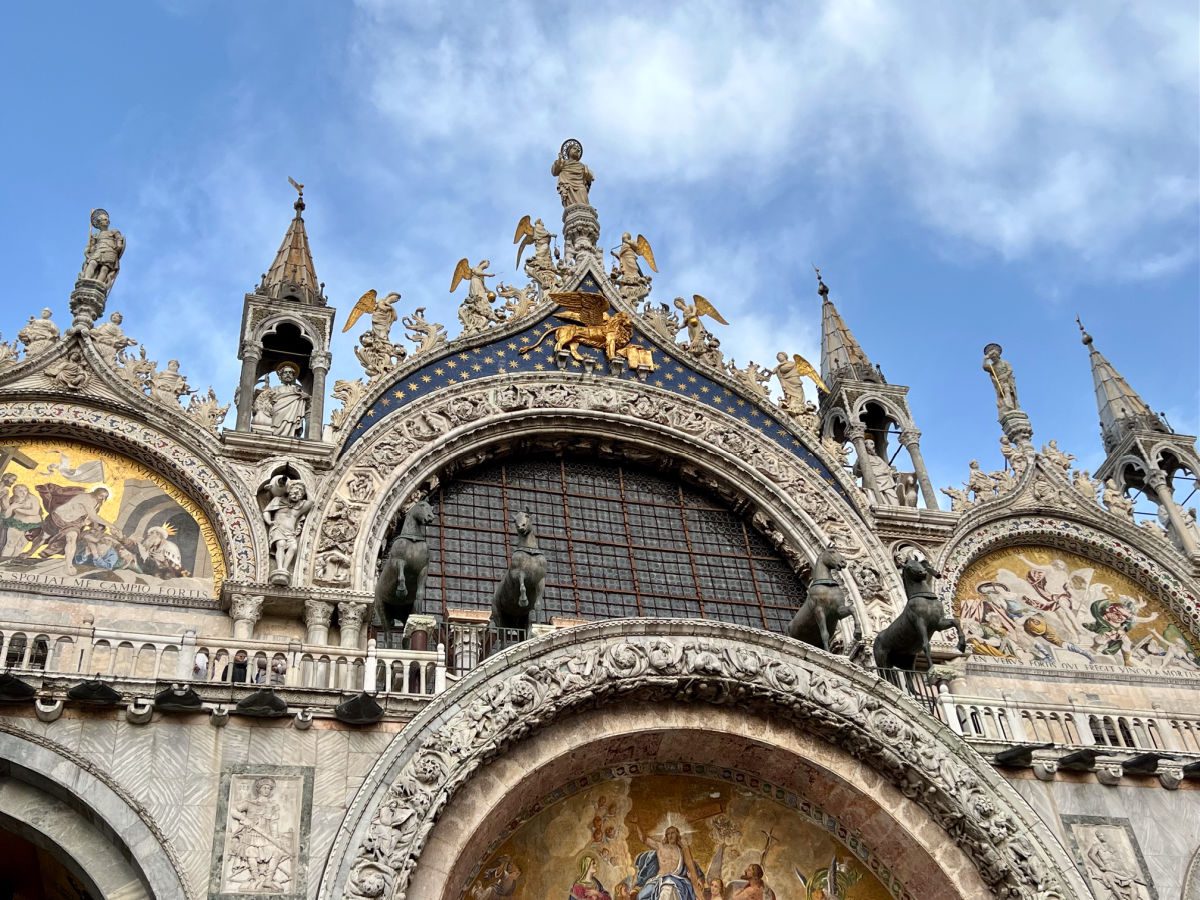
Start your time in Venice in the heart of the city, at St. Mark’s Square (Piazza San Marco). If this is your first visit to Venice, a tour of the Basilica of San Marco is a must, and you may also want to consider a visit to Doge’s Palace.
Venice has a history as a wealthy city-state, with a long history in trade. The merchants of Venice wanted to establish the city’s significance and therefore built the Basilica of San Marco, even though it can’t be proven that the Apostle Mark ever visited Venice when he was alive. However, his body was brought to Venice centuries later.
A mix of Roman-Byzantine architecture, St. Mark’s is unlike other Catholic churches that you will visit in Italy and throughout Europe. It is most well-known for the golden mosaics that adorn the ceiling, showing the main stories of Christianity and the Life of Christ.
You will need to pay a small entry fee to visit the Basilica, and additional fees if you also want to see the ornate gold and gem-covered Pala d’Oro altar or visit the museum at the top of the church to see the famous golden horses, which were looted during the Fourth Crusade (copies of which are on the Arc near the Louvre in Paris and the Brandenburg Gate in Berlin.) This will also afford a beautiful view of the square from the terrace.
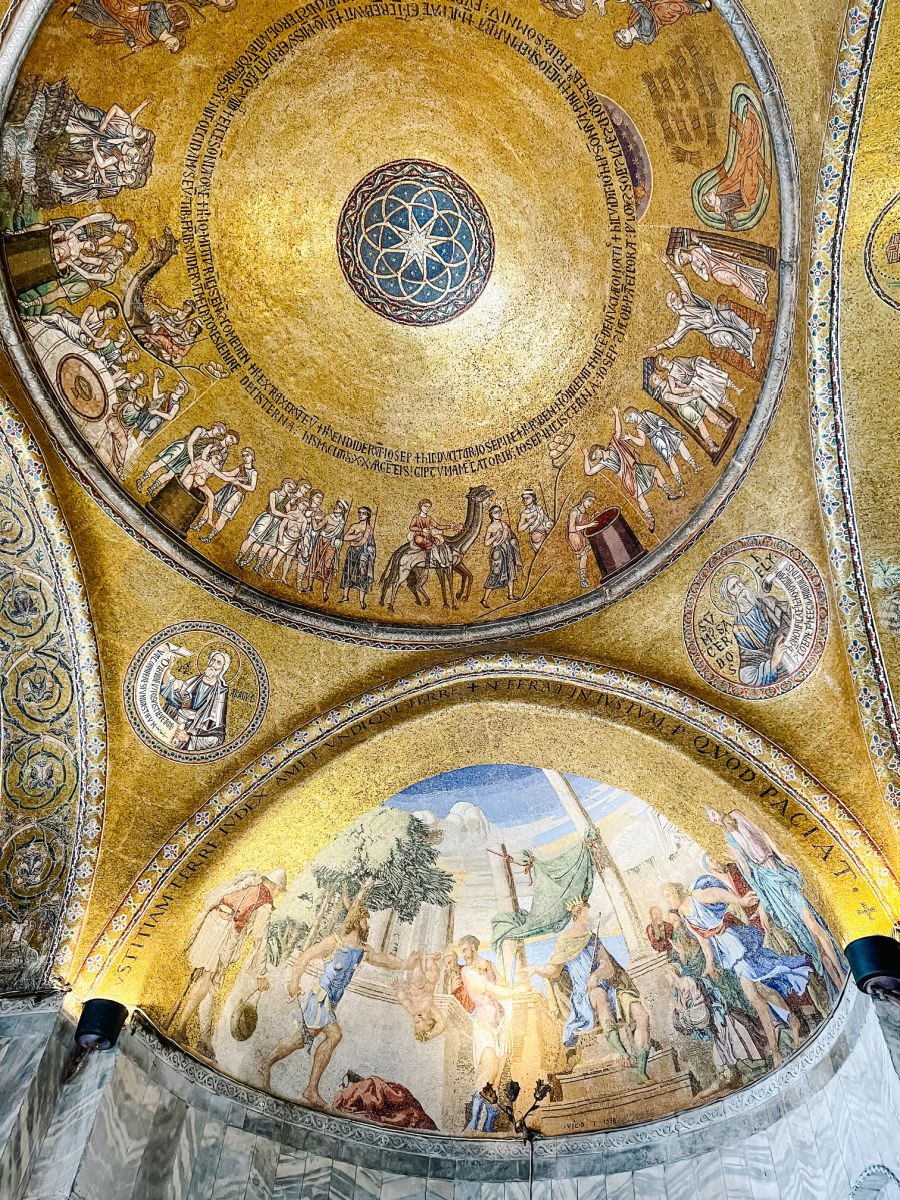
For a different view of the square, you can also climb the Campanile, the Bell Tower located in Piazza San Marco. Just keep in mind that if you are visiting during high season, the lines to enter both of these attractions can be quite long so unless you book a skip-the-line ticket, you may prefer to go inside very early on your second or third morning.
Doge’s Palace & Bridge of Sighs

After a visit to St. Mark’s, consider a tour of the Doge’s Palace. This is the former palace of the rulers of Venice, which were elected by the other merchants and powerful men. More than 120 Doges have called this palace home over the course of seven centuries. In addition to the beautifully decorated and ornate rooms, you will get to see the Bridge of Sighs and its attached prison, and learn stories of Venice’s dark past.
You can visit the Basilica on your own and sign up for a public tour of the Doge’s Palace, but I’d recommend taking a private tour of St. Mark’s and Doge’s Palace to avoid the lines and learn more about Venice’s history. My partner LivTours also offers special family-focused tours.
When your tour is over, take some time to soak up the atmosphere in Piazza San Marco with a drink or coffee at Cafe Florian in the square. Try to time your visit to Piazza San Marco with the top of the hour, so that you can see and hear the astronomical clock ring its bell and change time.
Sunset Gondola
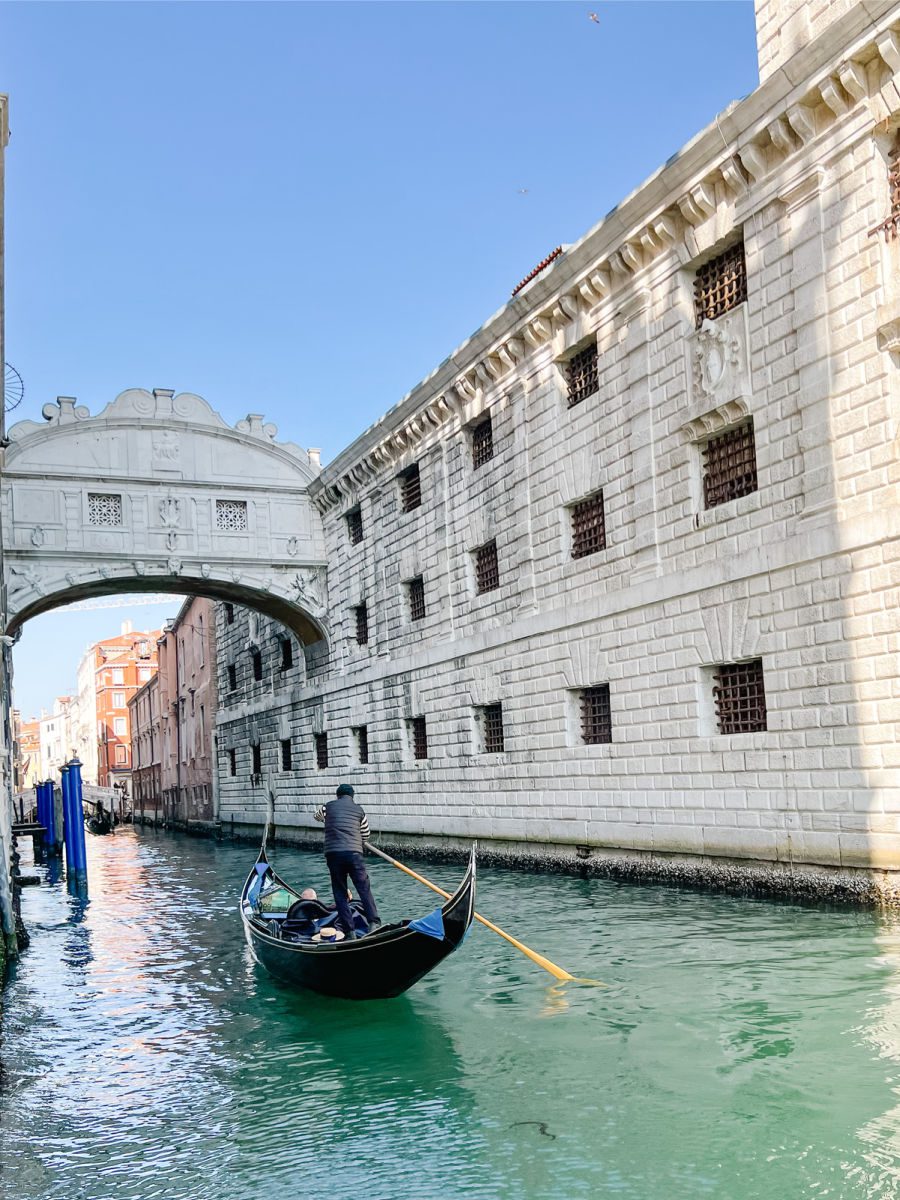
A gondola ride along the Grand Canal to the Rialto Bridge (or the side canals) is the perfect way to end your first day in Venice. Another option is to wait until evening and take a ghost tour and gondola ride — imagine all the stories that Venice has to tell!
Day Two – Morning (Murano, Burano, Torcello)
I would highly recommend spending at least one of your three days in Venice visiting some of the more popular outer islands, including Murano, Burano, and Torcello. It is possible to visit these on your own by taking the Vaporetto, just keep in mind that lines can be extremely long, especially in high season, and you may spend an extra hour or two waiting in lines. Also, if you only want to go to Burano, you still have to take the Vaporetto to Murano, and then continue to Burano, there is no direct connection from Venice to Burano.
To save some time and arrive in comfort, you can book a private water taxi or take a private Islands tour, which includes a water taxi. It is pricier but you will get more out of your day.
Murano
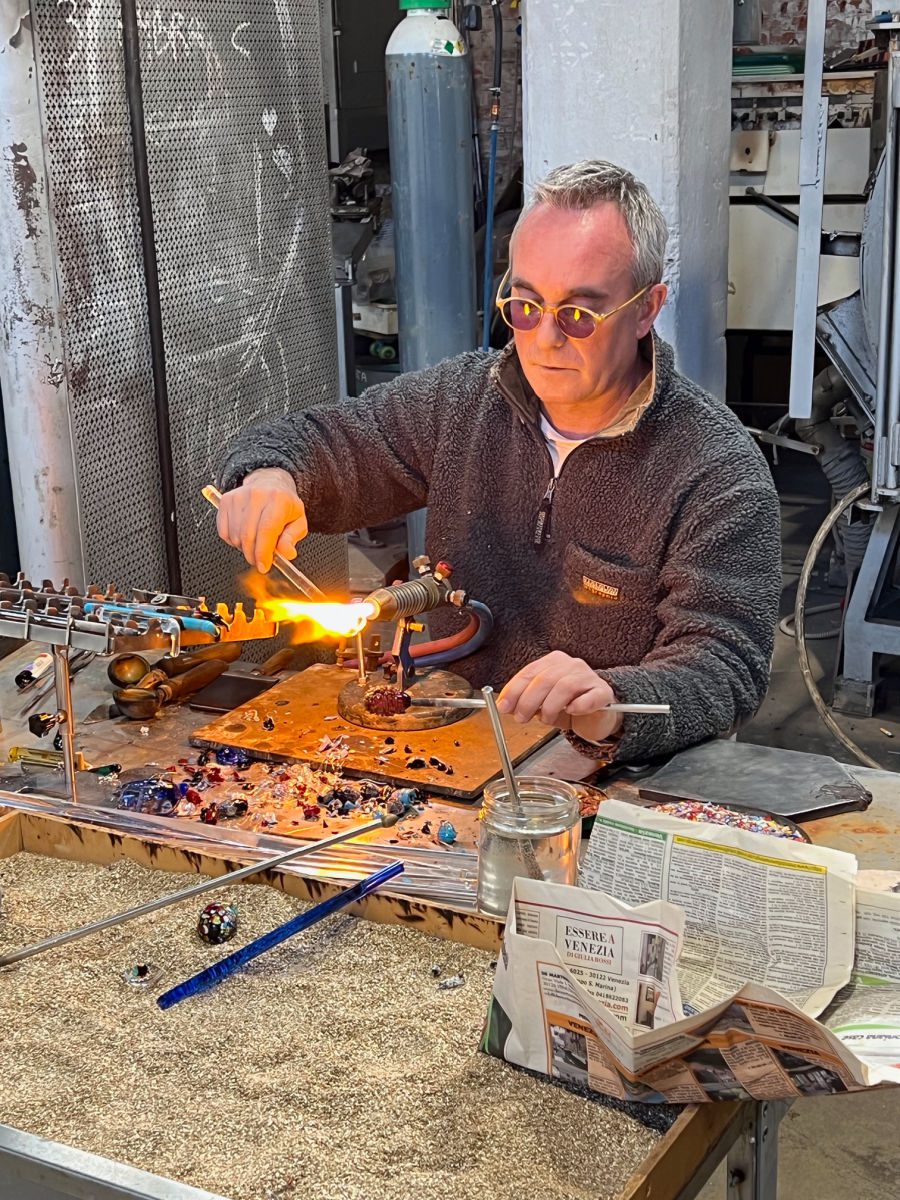
Murano is known for its glass-blowing and glass artisanship, which is often passed down from generation to generation. There are many glass-making factories on Murano, and it is the main reason that people visit. Many of the factories will have public demonstrations or will be happy to arrange a tour. In exchange, they hope that you will visit the showroom and buy something, but a purchase is not obligated.
I was a little skeptical about visiting, as I’d heard about the hard sales practices, but I’m very glad that we visited Fornace Mian during our visit. We were able to meet with three different master craftsmen and we were wowed by the skill and artistry that goes into each type of glassmaking. First, we saw a master craftsman doing typical glassblowing and glass pulling, creating a beautiful glass unicorn in under a minute.
Next, we saw a master craftsman who uses a technique to embed gold leaf inside glass designs. He actually has worked closely with Dale Chihuly to teach him new techniques. Finally, we met a true artist that overlays glass with gold leaf and etches beautiful designs of his own creation. We were very impressed by the pieces in the large showroom but weren’t made to feel uncomfortable when we politely declined a purchase.
Unless you are intent on making purchases, I would suggest just visiting one factory and then moving on to Burano.
Burano
Burano is known for its history of lacemaking and for its colorful houses and was my favorite of the three islands. This UNESCO World Heritage Site is a photographer’s delight, with former fishermen’s houses that are now colorfully painted in vibrant colors.
Plan to spend some time here exploring both the main avenues and side passageways. It is also a shopping delight, with shops where you can learn about Merletto lace techniques and purchase linens, accessories, and clothing. Some handmade lace tablecloths can take up to two years of work. I was very impressed with the linens and linen clothing at Martina Vidal on Burano.
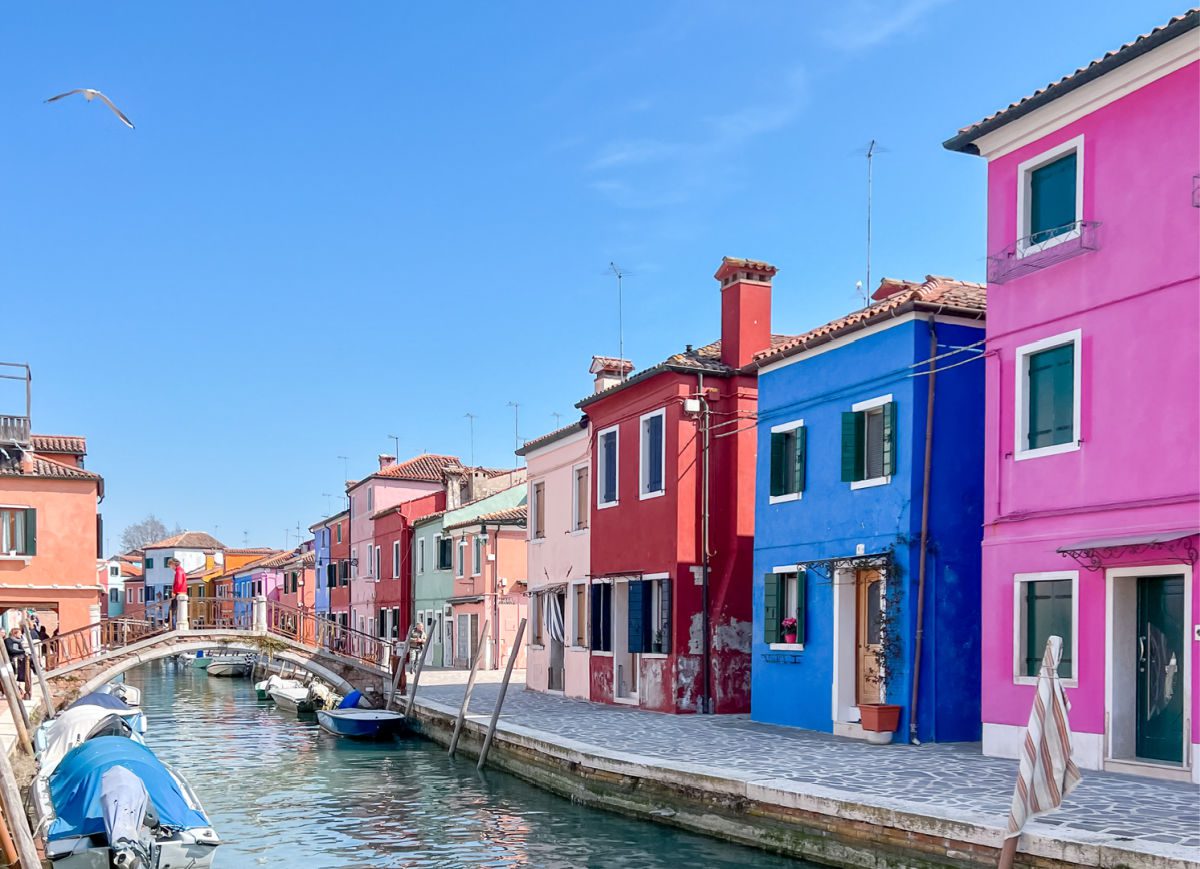
Also, be sure to stop into Palmisano for some pastries or traditional cookies. You will probably also get a kick out of the “leaning” church spire on the island.
Torcello
If you are running short of time, you can skip over Torcello, but locals love this quiet island. There isn’t a lot to see, beyond one small church, but the green space is a nice contrast to heavily populated Venice. You can also enjoy a leisurely lunch along the main canal before heading back to Venice.
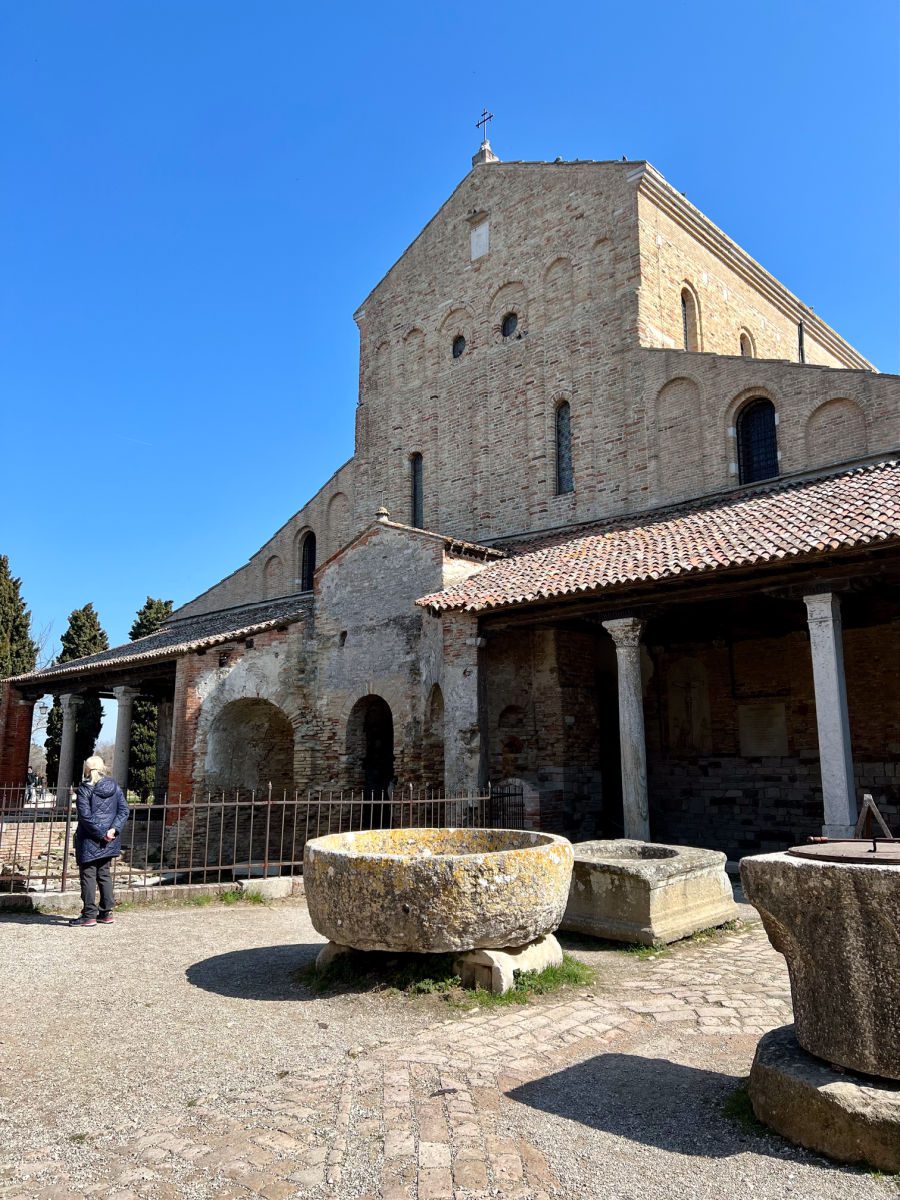
Day Two – Afternoon (Get Lost in Venice)
A tour of the three islands will usually take about four to five hours, bringing you back to Venice by early to mid-afternoon. I would suggest that you take this time to do what Venice is most famous for — get lost exploring all the side streets and bridges. Everywhere you turn is another scenic photo opportunity and no matter how far off course you might wander, eventually you will find your way back.
One of the famous sights to see is the Acqua Alta bookstore, which has been made Insta-famous (kind of like the bookstore in Porto). When we walked by there was a long line out front and as much as my teen loves to read, she decided it wasn’t worth waiting in that line. Instead, you might also seek out some of Venice’s best chocolate at VizioVirtù or grab a gelato at Gelatoteca Suso.
If you are visiting in the summer, you could also head over to the Lido, Venice’s beach, for the afternoon. Another option would be to sign up for a Carnival mask-making workshop, especially if this is a family trip, or a unique rowing experience in the lagoon (especially with teens).
We had planned to take an evening Cicchetti tour that I had booked with a local through Airbnb Experiences, but she ended up canceling on us just a couple of days before. Instead, I’d suggest using a proper tour company that is more reliable, but those usually offer daytime tours (when the Cicchetti bars are less crowded), so consider moving this activity to your final day.
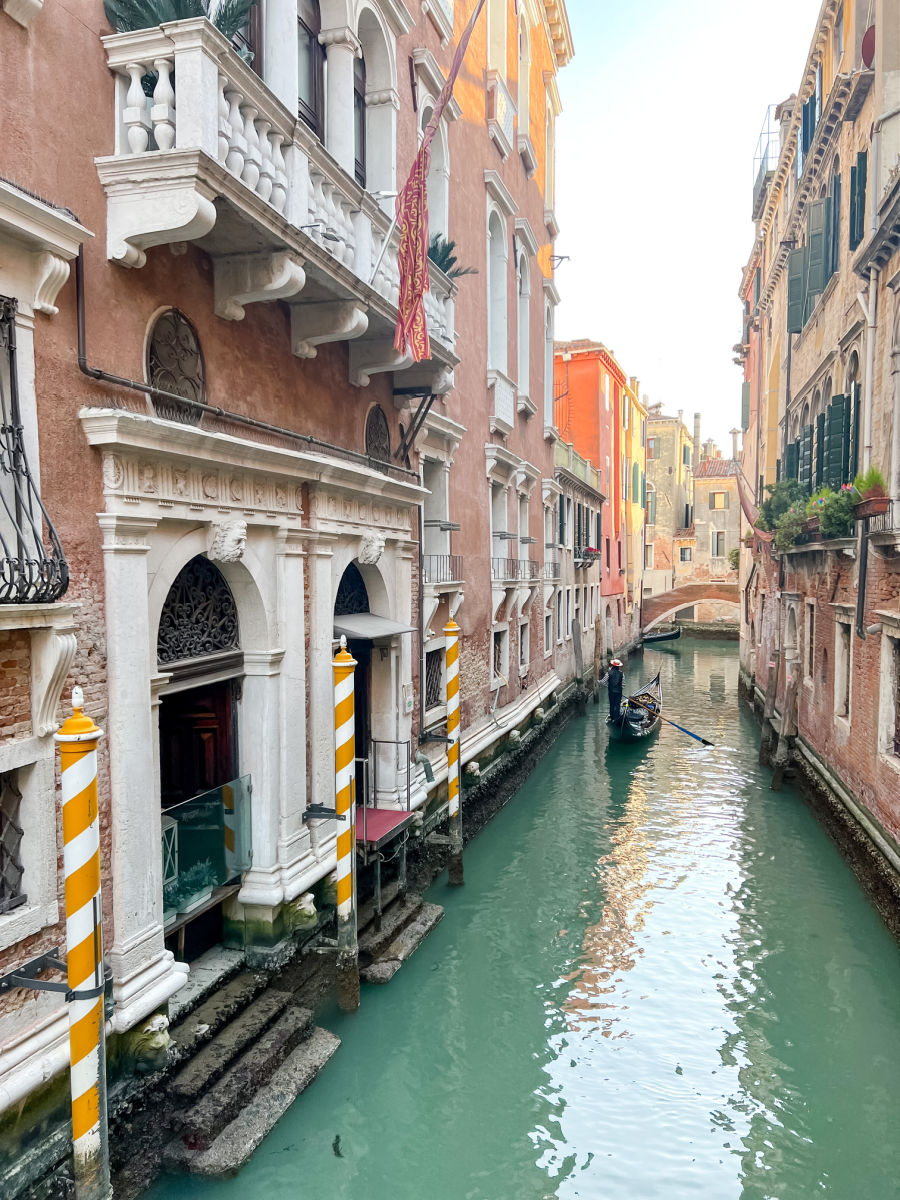
Day Three – Morning
Venice is the perfect spot for a photo shoot, with its many bridges, canals, and palazzos making for a perfect backdrop for families, couples, or solo travelers. We had booked a family photoshoot with Marta from Flytographer, but sadly had to cancel, which is the second family photo shoot we have had to cancel (the first was going to be in Paris in March 2020), but hopefully someday soon we will get some new family photos.
If you want to book with Flytographer, use my referral link to save $25 on your first photoshoot. Just keep in mind that because of crowds, it is best to get an early start for the best light and the fewest people in the background.
Day Three – Afternoon (Cicchetti Tour / Canareggio)
In the late morning or early afternoon, I’d suggest either a visit to the Rialto Market (which closes at 1 pm and is closed on Sundays) and/or a Cicchetti food tour.
Afterward, head over to the quieter Canareggio neighborhood. Five hundred years ago, Jews were forced to live and work on this tiny island and this was enforced until centuries later when Napoleon arrived.
You can explore this area and visit the Synagogue and Jewish Museum on your own, but I would suggest working with a guide that can tell you more about the history of this area. On our trip, we used Nadia Mazzon from Touring Venice for some of our tours and she is a local Venetian with a wealth of knowledge when it comes to local history and art history.
Another option would be to explore the Dorsoduro neighborhood. Starting from the Accademia bridge, you can walk to the easternmost tip of the district, Punta della Dogana, near the famous church of Santa Maria della Salute.
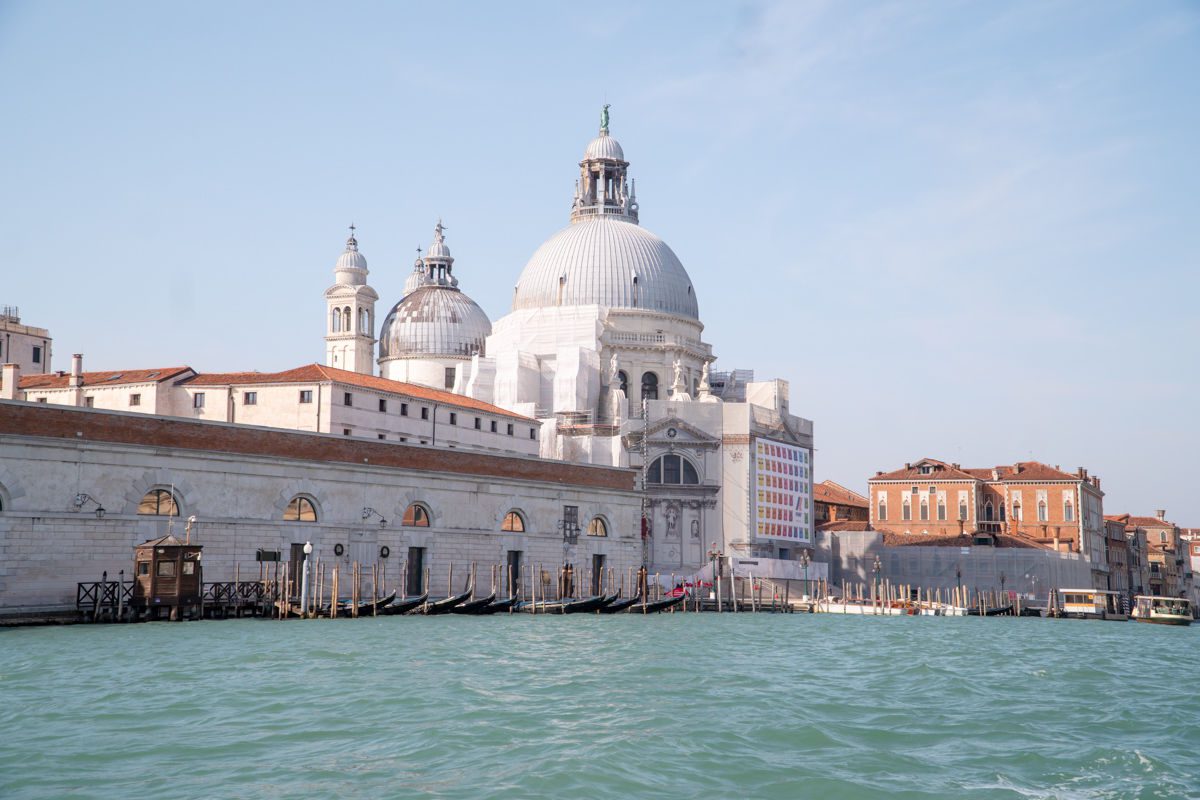
Other sites include Campo San Trovaso and the ‘Squero’, one of the last Gondola-yards in town, the church of San Sebastiano and the nearby University, and Campo Santa Margherita, one of the liveliest Venetian squares. Art lovers could also check out the Peggy Guggenheim Collection (closed on Tuesdays) or the Gallerie dell’Accademia.
How to Get to Venice
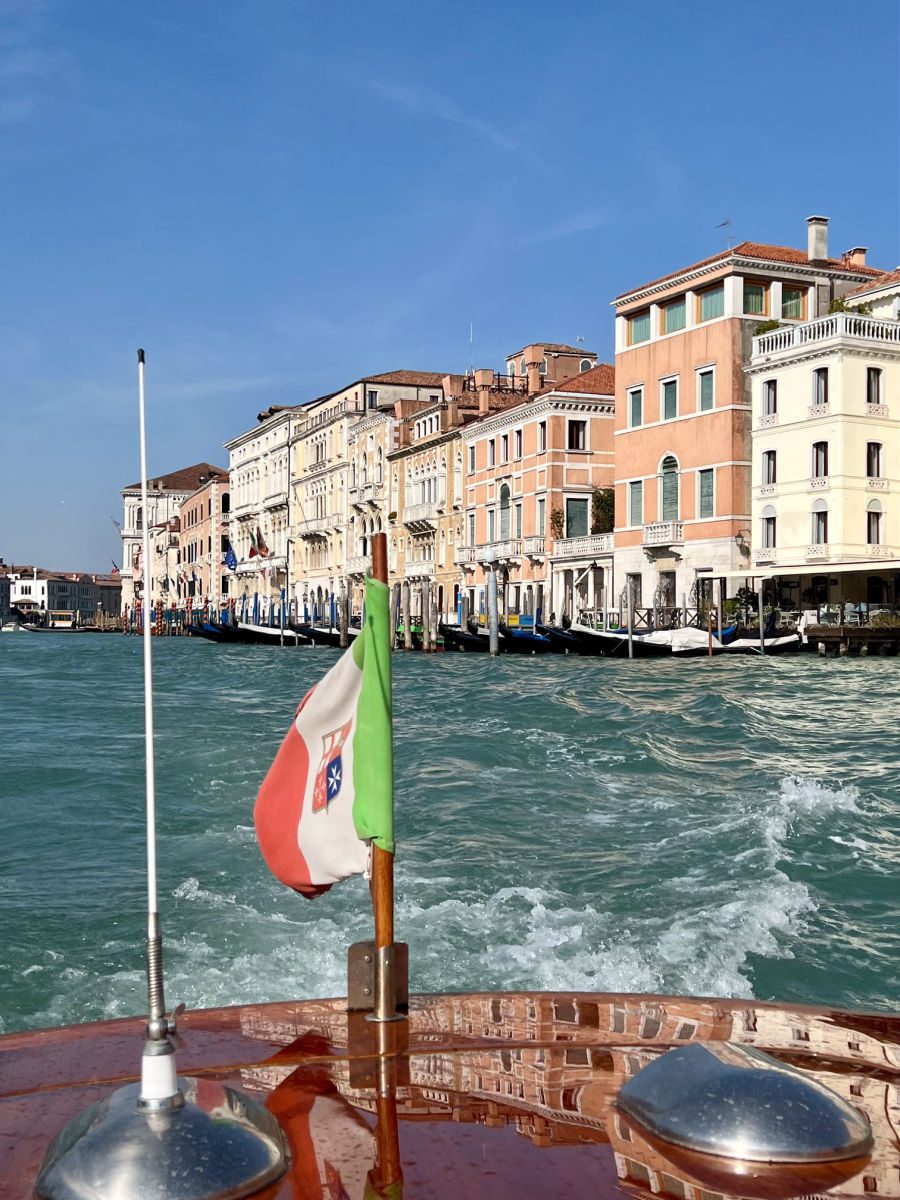
There are a number of direct flights from the United States to Venice, although some may be operating seasonally from May through October. United, Delta, and American offer direct flights from New York (JFK), Newark (EWR), and Philadelphia (PHL). The international airport is Marco Polo Airport (VCE).
You can also connect through Paris, Rome, or other European cities. However, chances are Venice is just going to be one stop on your Italy itinerary. If you are spending a couple of weeks in Italy, you may want to fly into Rome and then take the train to Florence and finish in Venice.
If you are arriving in Venice by plane, there are three primary ways to reach the main islands of Venice. The most convenient, especially if you have a lot of luggage, is to hire a private water taxi.
A shared water taxi is also an option to split the cost. We opted for a private transfer and while it is pricey, the convenience was paramount and we appreciated the time savings as well since our flight from Paris had departed an hour late.
Once we arrived and gathered our luggage, a representative met us outside of the baggage claim and walked with us the five minutes through the moving walkways to the docks, and escorted us directly to our waiting water taxi. You can also book upon arrival, but I liked knowing we weren’t going to have to wait or struggle to figure out where to go. This also worked well since our hotel has a private dock and we were able to have door-to-door service.
Another alternative is to take the public Alilaguna water bus. You can purchase tickets from machines in the arrivals hall and then follow the moving walkways to the port to line up for the appropriate route. These make stops at San Marco, Rialto, Fondamenta Nuove, and Guglie. From there, you will need to walk with your luggage to your hotel.
The third option is to take a 20-minute bus ride from the airport to Piazzale Roma. From there, you will need to either walk to your hotel (if it is close) or take the Vaporetto, or public water bus, to the closest stop to your hotel and then walk from there. Piazzale Roma is also where you would arrive if you are visiting Venice by car.
You may also arrive in Venice by bus or train to the Venezia Santa Lucia train station. From there you can either walk to your hotel (it is about 30 minutes to St. Mark’s Square) or hop on the Vaporetto to the closest stop to your hotel.
Getting Around Venice
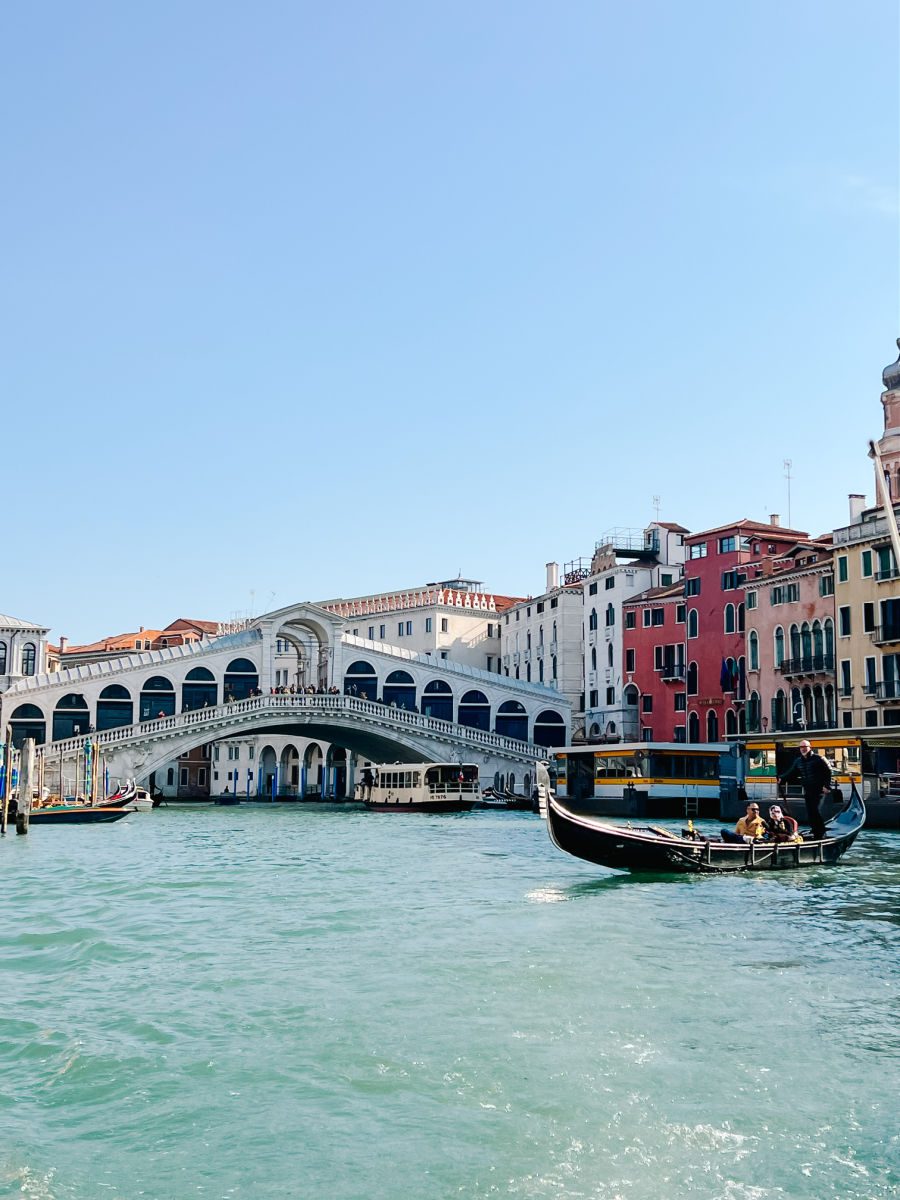
The easiest way to get around Venice is on foot. Remember, Venice is actually 118 islands, which are interconnected by bridges. There are no cars or bicycles so you are either using your feet or hopping onto some sort of boat. Most of this 3 day Venice itinerary can be accomplished on foot, with the exception of getting to Venice and a day trip to the islands of Murano, Burano, and Torcello.
Otherwise, you can get around Venice by water taxi, public water bus / Vaporetto, or by gondola. I highly recommend a ride on the Grand Canal from the Rialto Bridge to St. Mark’s Square at some point on your trip because there is nothing like seeing Venice from the water. If you want to book a private water taxi, I can recommend Easy Taxi (+39 320 4292821) — and they take credit cards!
To take the Vaporetto or ACTV, check the timetable and route for where you want to go and find the station closest to you. You can purchase tickets via the mobile app or at the automated ticket machines at the station. Just don’t forget to validate your ticket before getting on board! Tourists may prefer to purchase a full-day ticket to be able to hop on and hop off with ease, but single fare tickets are also available.
Gondola is going to be your most expensive option — but certainly, a once-in-a-lifetime experience to be had. Just keep in mind that some gondoliers may say they go on the Grand Canal, but in our experience, some take side canals to the Grand Canal, do a quick turnaround by the Rialto Bridge, and then head back through smaller canals.
While this may feel like a “cheat”, I honestly like the gondola experience in some of the smaller canals. In my opinion, take a water taxi on the Grand Canal and a gondola wherever their heart desires because it is more about the experience than the destination.
Where to Stay in Venice
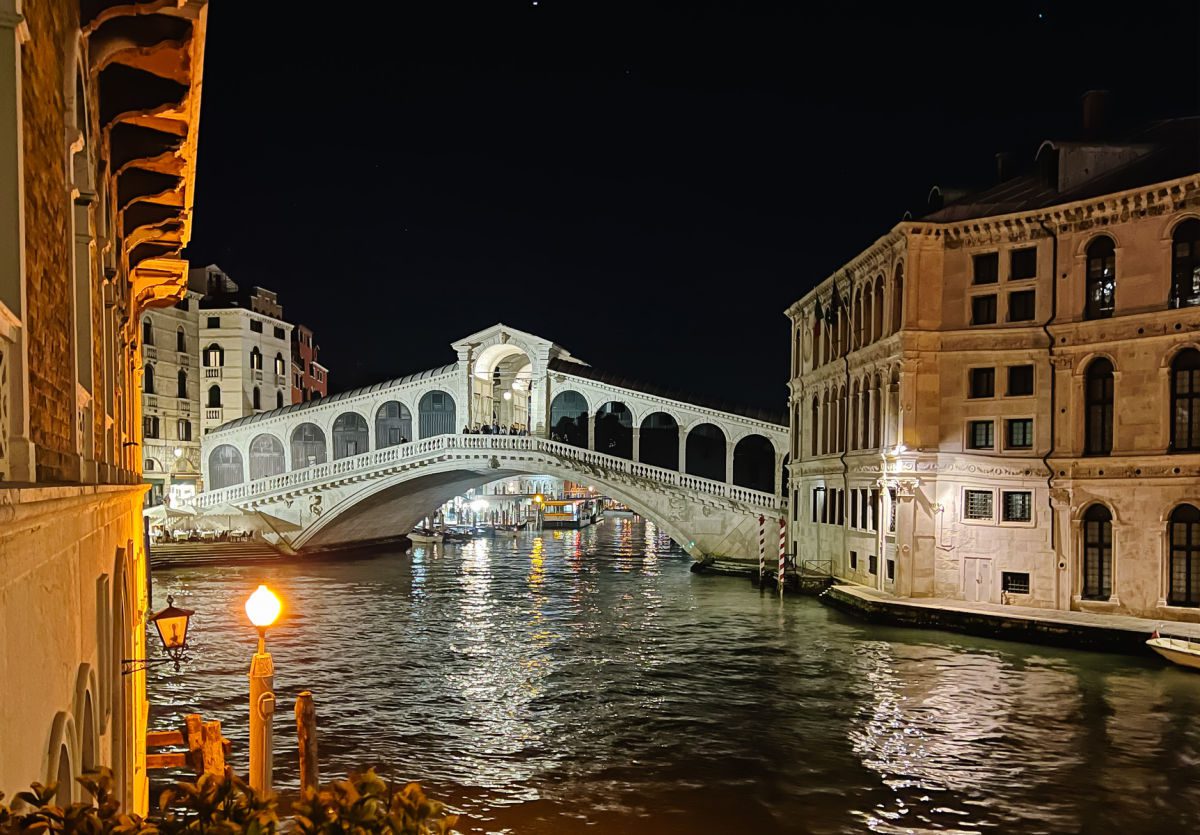
On my first visit to Venice, my husband and I stayed at the Hotel Danieli in Riva Degli Schiavoni. And in my past experience as a travel advisor, I’d booked many clients at the Hotel Bauer Palazzo and the Hotel Londra Palace. If you are visiting in the summer, you may want to consider looking for a Venice hotel with a pool.
Since we were getting two rooms this time for a family trip, I wanted something a little more affordable, but a hotel that still offered the same character and charm. I took the advice of my friend Eric from Travel Babbo and booked two superior rooms at the Hotel Al Ponte Antico.
Everything about this hotel is perfect if you are looking for authenticity, service, comfort, and above all — location! From the minute we arrived, the owner Matteo and his team made us feel entirely welcome and assisted us above and beyond.
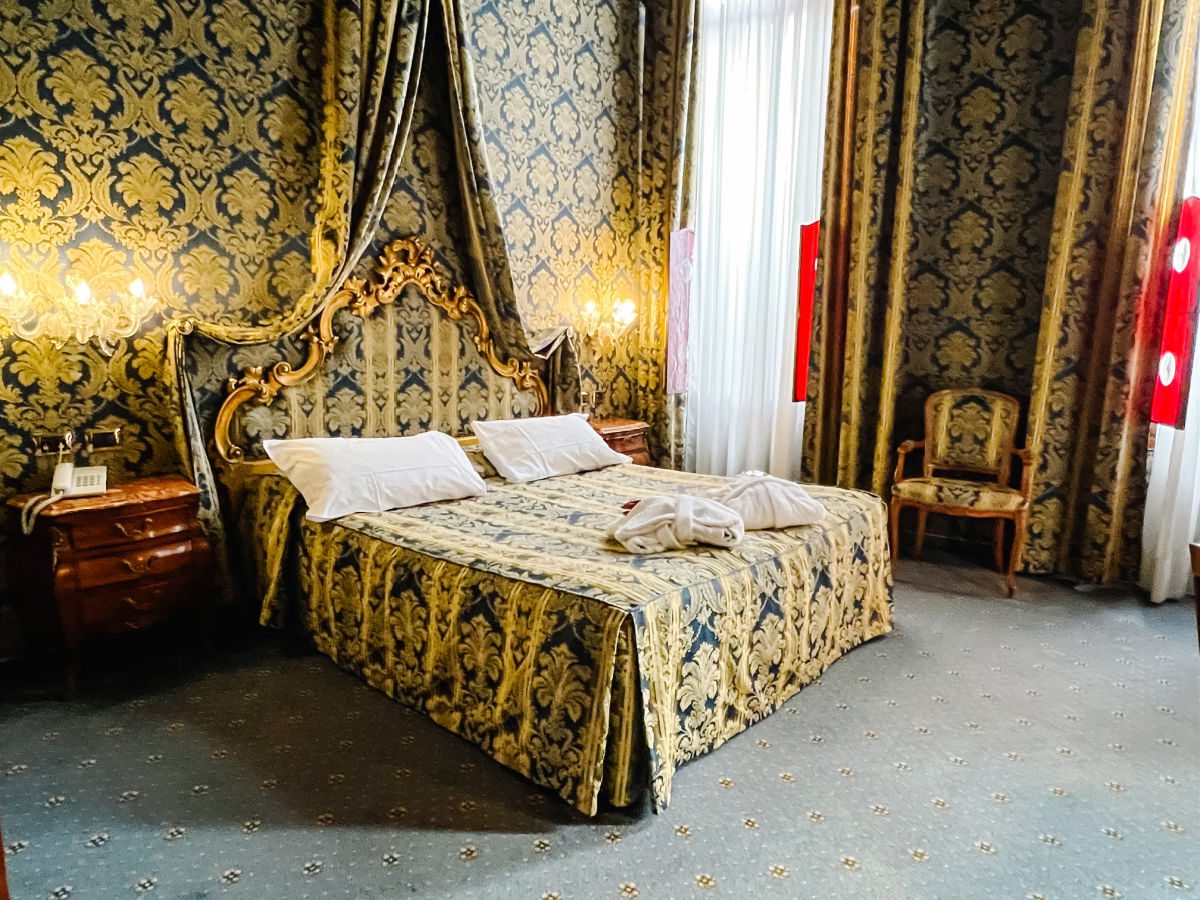
The hotel is located just steps from the Rialto Bridge, with absolutely stunning views that can be enjoyed over breakfast or cocktails from the hotel’s terrace. We arrived at the hotel’s private dock and we were immediately made to feel at home in this gorgeous nine-room hotel set in a lovingly-restored palazzo. Our superior rooms were quite spacious, with large bathrooms and traditional Venetian decor. One even looked out over the terrace to the canal beyond.
Breakfast was included and a large selection of pastries was made fresh each morning. Staff was on site 24 hours a day to assist guests or pour a cocktail, coffee, or tea in the hotel’s small lounge or adjacent terrace.
One of the great things about staying in a hotel located near the Rialto Bridge, or another major landmark in Venice, is that no matter how lost you get (and you will get lost at least once), you can always follow the signs to Rialto Bridge or S. Marco and find your way back from there.
If Al Ponte Antico is fully booked, a few others you may want to consider are:
Where to Eat in Venice
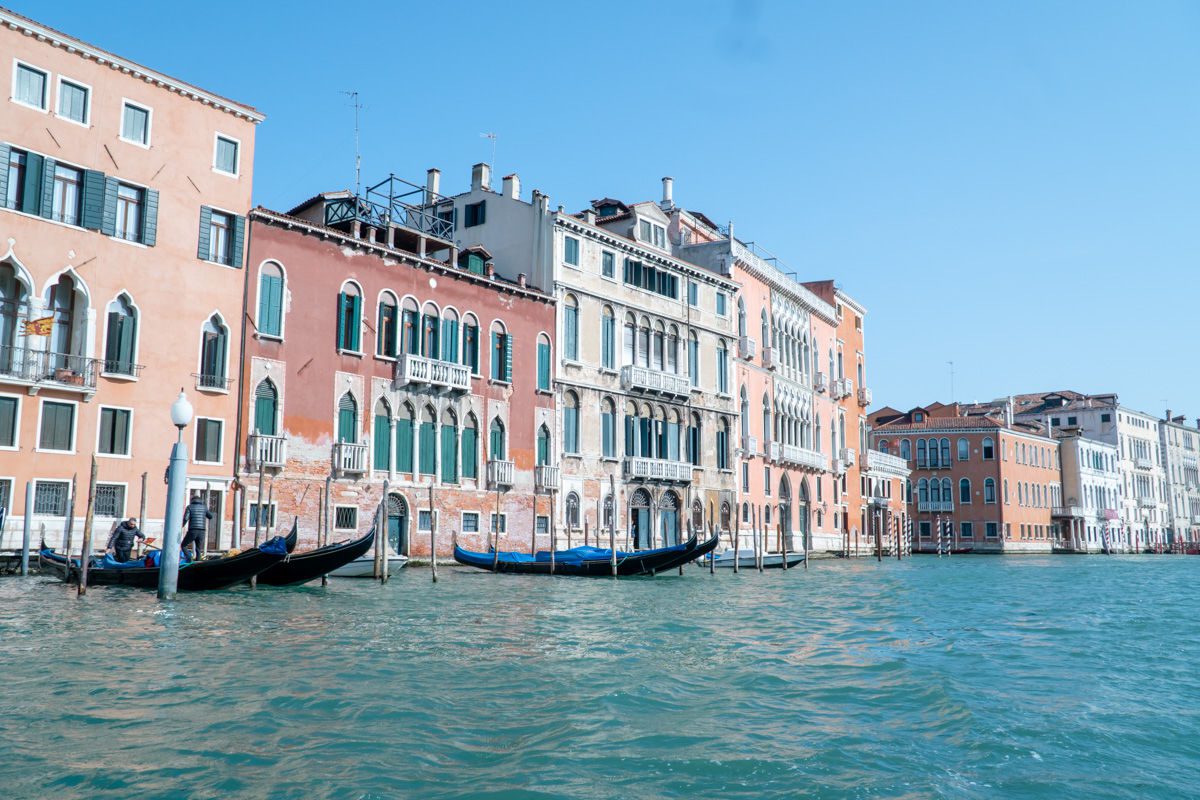
On our first trip to Venice, my husband and I swore the food was terrible. But we made the rookie mistake of getting suckered into eating along the Grand Canal, at those restaurants where the guys stand outside trying to lure tourists in. And of course, the food was overpriced and mediocre. But that does not need to be your dining experience in Venice!
The thing to know about eating in Italy is that the food is very regional. If you find a restaurant offering gnocchi Sorrentino or chicken Parmigiano, keep walking. As you might expect on an island, traditional Venetian food is based on seafood. You are going to see a lot of sardines, cod, and squid ink pasta on the menus. In the springtime, you may also get to try soft-shelled moleche, or small green crabs, which are caught nearby.
Venice is also known for its Cicchetti bars. These are similar to Spanish tapas bars, where locals gather to stand around and socialize over drinks and light bites. Instead of a pork-heavy menu, many Venetian Cicchetti are fried — such as fritto misto, which is a mix of fried fish, calamari, and some vegetables. While on Burano, you should also try Bussolai or Buranelli biscuits or cookies.
Of course, you can’t leave Venice without also enjoying a Bellini, which was created at Harry’s Bar in Venice, or an Aperol Spritz. Our trip went sideways once my husband tested positive, so we were not able to get to try all the restaurants I had planned. However, if you are spending three days in Venice, here are some restaurant recommendations to consider:
For lunch:
- L’Bacaro de Bischeri, Ruga dei Oresi 57 in San Palo for sandwiches and quick bites
- Dal Moro’s Fresh Pasta to Go, C. va al Ponte de l’Anzolo, 5314, popular take away pasta in convenient containers
- Puppa Bar Venezia, Calle dello Spezier 4800 for casual lunch and dinner
- Ristorante due Fratteli, Rio Terà Farsetti, 1836, pizza and pasta in the Canareggio neighborhood
For Coffee and Gelato:
- Caffé Del Doge, Rialto, Calle dei Cinque, 609 for coffee and pastry
- Gelatoteca Suso, Sotoportego de la Bissa, 5453, for the best gelato in Venice
For Dinner:
I would strongly recommend making dinner reservations in advance or asking your hotel for assistance for those that don’t offer reservations online.
- Poste Vecie, San Polo c/o Campo de le Becarie (near the Rialto fish market), seafood-based, fine dining
- Al CoVino Ristorante, Calle del Pestrin, wine bar and restaurant
- Taverna Al Remer, Cannaregio, 5701, near the Rialto bridge, this is a hidden gem with the entrance in a gorgeous square on Grand Canal. It used to be a factory of oars, but today has become a chic osteria perfect for both aperitif and dinner time with a small menu of Venetian specialties and a nice selection of Cicchetti.
- La Porta d’Acqua, Riva del Vin, 1097, on the Grand Canal, this restaurant combines the flavors of the Amalfi coast with Venetian seasonal specialties. There is a lovely view of the Grand Canal from the ground floor.
- Antico Calice, Calle dei Stagneri O de la Fava, 5229, traditional Venetian Osteria for a traditional meal with simple ambiance.
- Al Covo, Campiello de la Pescaria, 3968, fine dining for a special meal in Venice.
- Osteria alla Testiere, Calle del Mondo Novo, 5801, fish and seafood-based menu.
Cicchetti Bars:
Keep in mind that Cicchetti bars get very crowded in the evenings and finding a place to sit or stand can be a challenge at the more popular establishments. If you just want to try these dishes, consider taking a Cicchetti food tour or visiting for lunch instead.
- Bar all Arco, campo s. Polo 436
- Cantina do Spade, Calle del scaleter 859 (have the polpetta)
- Al Merca, Campo bella Vienna 213 (good for panini)
- Salvneria, via Giuseppe garibaldi 1769
What if you have more time in Venice?
If you have more time in Venice, you can also enjoy some day trips including:
- A day trip to Cortina and the Dolomites
- Hiking in the Dolomites
- Day trip to Verona
- Prosecco wine tour and tasting
When is the best time to visit Venice?
When you are planning your trip to Italy, try to avoid visiting Venice on the weekend. Even when visiting during the off-season, we found the narrow streets of Venice to be extremely crowded on a Saturday night with locals and visitors alike. Of course, you can always step off the main avenues and find a smaller campo (square), but your trip will likely be easier to plan if you visit during the week.
First, the crowds will be less. Second, if you want to visit the glass factories on Murano, it will be easier for you to observe glass-blowing demonstrations as the factories are usually closed on the weekends. Third, if you want to visit the Jewish quarter and the synagogue or Jewish Museum, you won’t need to work around closing hours on Shabbat (Friday evening through Saturday evening.)
If you are looking to avoid crowds, the best time to visit will be between March and May. The fall shoulder season still remains quite popular with pleasant temperatures. Keep in mind that if you are visiting between late October and February, you may witness some of Venice’s legendary flooding, also known as Aqua Alta, so be sure to bring your rain boots.
If you visit in the winter, don’t be surprised by cold weather or flooding. You will also have shorter days and the orchestras in St. Mark’s Square will stop playing earlier.
When planning your trip, also keep in mind Venice’s event calendar. The Biennale or Venice Film Festival is held in late August – early September. Hotel availability will be limited and prices will be higher.
Carnival in Venice takes place over 10 days from mid-February through March. It can be a great time to visit to see everyone dressed up in costume — but it will also be more expensive.
Traveling to Italy?
If you are planning on visiting other parts of Italy, you may want to check out some of my other articles:
- How much does a family trip to Italy cost?
- 5 days in Rome with kids
- 3 days in Florence with teens
- Why to visit Verona
- 24 hours in Bologna
- 2 days in Parma
- Tips for visiting Cinque Terre
- 2 days in Milan
- Stop over in Orvieto
Save this to Pinterest
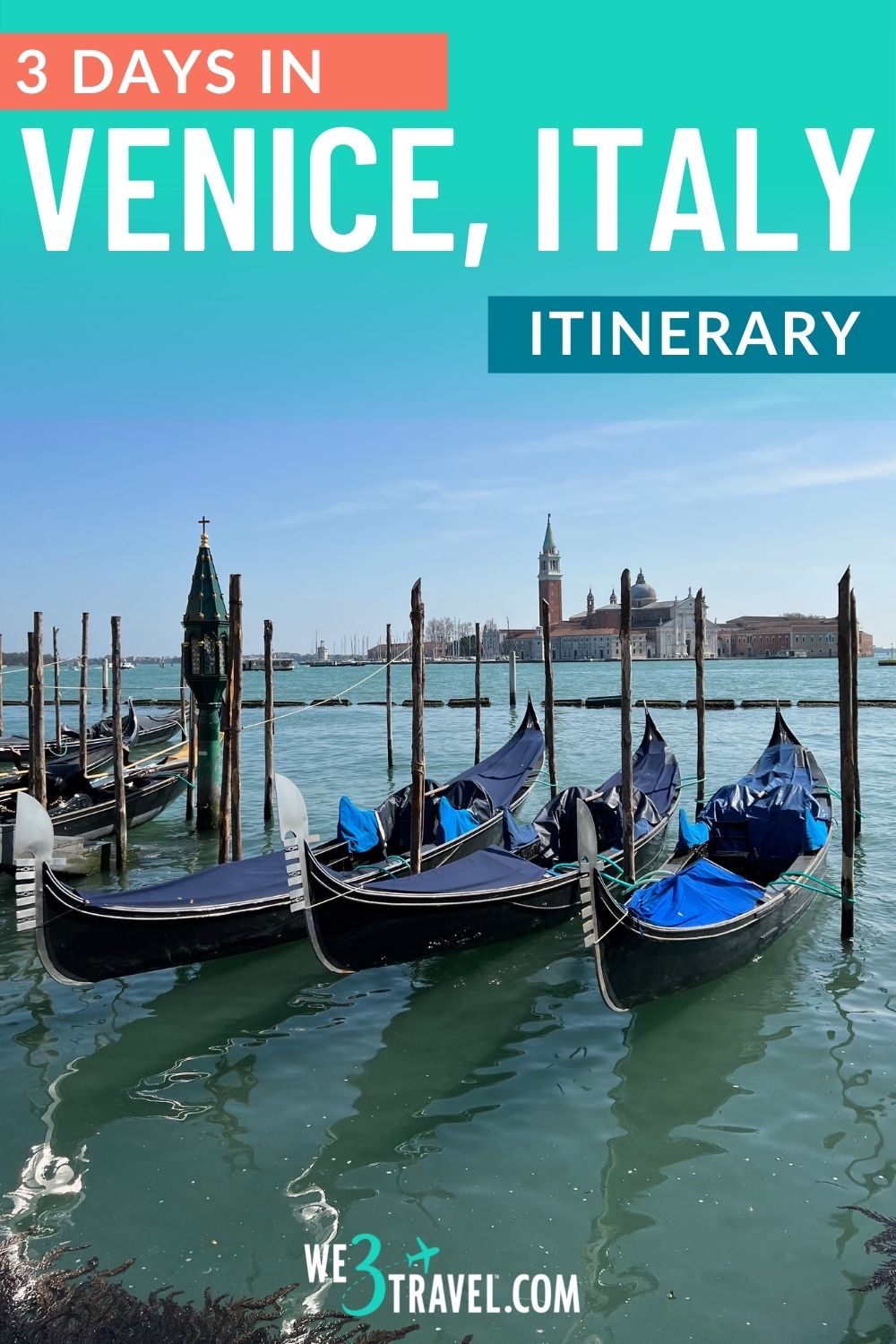

Tamara Gruber is the Founder and Publisher of We3Travel. A former marketing executive and travel advisor, Tamara is an award-winning travel writer and recognized expert in family travel. Tamara is a member of SATW, NATJA, IFWTWA, and the Adventure Travel Trade Association, and serves on the Board of the Family Travel Association. She is also the publisher of YourTimetoFly.com and the co-host of the Vacation Mavens travel podcast.


